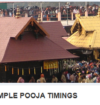Kummattikali, Kerala’s Traditional Mask Dance
Kummattikali, also known as the Mask Dance, is a vibrant traditional dance form deeply ingrained in the cultural and mythological tapestry of Kerala. This performance is predominantly celebrated in the Thrissur, Wayanad, and Palakkad districts during the Onam festival, which occurs between August and September. In 2024, Onam will be observed from September 14th onwards.
During Kummattikali, dancers don elaborate wooden masks and costumes crafted from grass and dried leaves. These masks, which represent various mythological characters such as Lord Krishna, Darika, Kiratha, Kali, Narada, Ganapathi, and Hanuman, are traditionally made from materials like Jackfruit tree wood, Coral tree wood, Hog Plum tree wood, Saprophyte, or Alstonia scholaris. The costumes feature ‘Kummatti pullu’, a special type of grass known for its medicinal qualities.
The performance is set to the rhythmic beats of the ‘Onavillu’, a percussion instrument made from Arecanut wood. The dance themes are inspired by Indian mythology, including tales from the Ramayana, the story of Darika Vadham, legends of Shiva, and various folk stories such as Manjan Nayare Pattu. Dancers move from house to house, providing entertainment and collecting small donations of cash and food.
Legend has it that Lord Shiva from the Sree Vadakkunnatha Temple instructed his bhuthas (spirits) to perform this dance to celebrate the annual visit of the mythical King Mahabali to Kerala. This ancient tradition continues to be celebrated with great zeal during the Onam festival.




